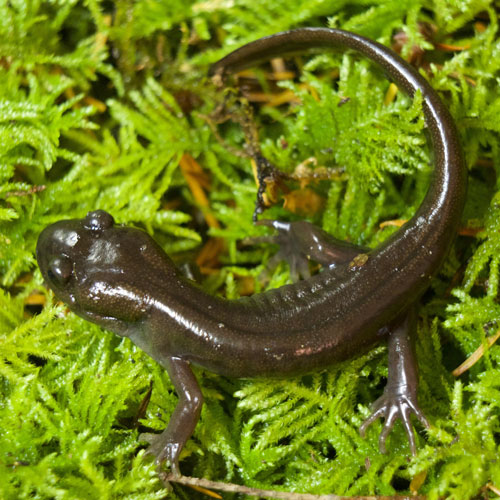Fast Facts
Where they live
- View a map of where they live.
- Found throughout Washington, on both sides of the Cascades as well as within the mountainous regions of the Cascades
- Prefer moist vegetation near water sources in forests, prairies or mountain meadows; they have even been found in human-disturbed and urban areas.
- Mostly live underground in rodent burrows.
Breeding
- Breeding season is extremely variable and can range from January to July.
- Can be found in groups under rotting logs and rocks near edges of water sources during this time (especially during April and May).
- Eggs are laid near the shore of ponds and lakes and slow moving streams.
- Sometimes eggs are laid individually and sometimes in bunches attached to underwater plants or substrate.
Cool Biology Facts
- In lower elevations, the long-toed salamander will sometimes not hibernate at all. However in colder areas, they will hibernate in groups of up to 14.
- Survive off the proteins stored in their tail while hibernating.
- When attacked or disturbed, will wave tail while secreting an adhesive white poisonous liquid to deter predators. In extreme cases it will drop its tail as a distraction and run for it. The tail is able to fully regrow (autotomy)!
Threats
- The biggest threat is habitat destruction and introduced fish species that attack and eat their eggs and larvae. View their status on the IUCN Red List of Threatened Species.

Amphibians & Reptiles of Washington
Do you know where rattlesnakes live in our state? Or which salamander breathes through its skin? Explore the fascinating diversity of the 26 species of amphibians and 28 reptiles found in Washington state.

